Canva is on a collision course with both Google and Microsoft, one that has the potential to turn the tech giants’ productivity suite empires to rubble. To challenge their power, the Australian design tool juggernaut has released a new secret weapon that could change the way people work. In fact, it feels like the beginning of a revolution that will transform the way we create. Its name is Magic Write.
Magic Write is the star feature of Canva Docs, the company’s newly launched tool for creating media rich documents. Docs has the same distinct visual nature that defines the rest of Canva’s tools, including its Social Media designer, which jumpstarted the company in 2013, Decks, the slides app that has created one billion presentations since it was introduced at the beginning of the pandemic, and Whiteboad, a recent collaborative tool that, according to Canva’s cofounder and chief product officer Cameron Adams, has amassed 10 million users in just two months since its introduction.
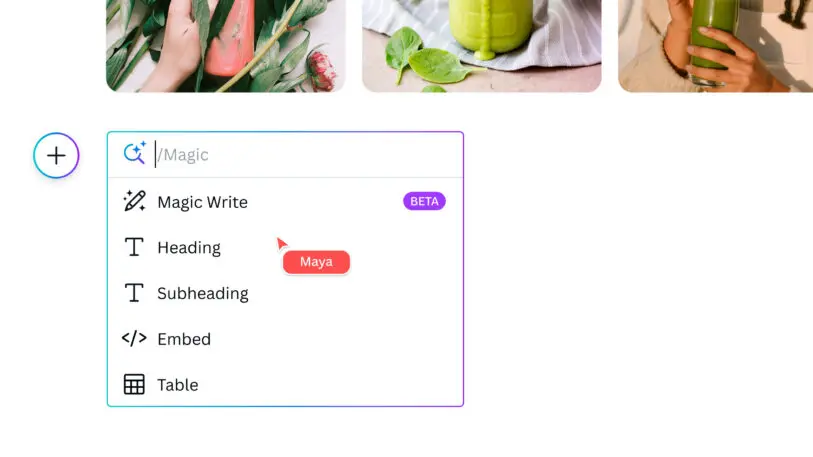
Like those tools, Canva Docs uses the same block-oriented visual approach, with pre-made, Lego-like components that can be quickly personalized. This allows anyone to quickly assemble a document that looks distinct from what MS Word or Google Docs can create. Instead of the dry nature of ordinary word processing tools, Canva Docs relies heavily on graphical headers that give a very clear structure to a document.
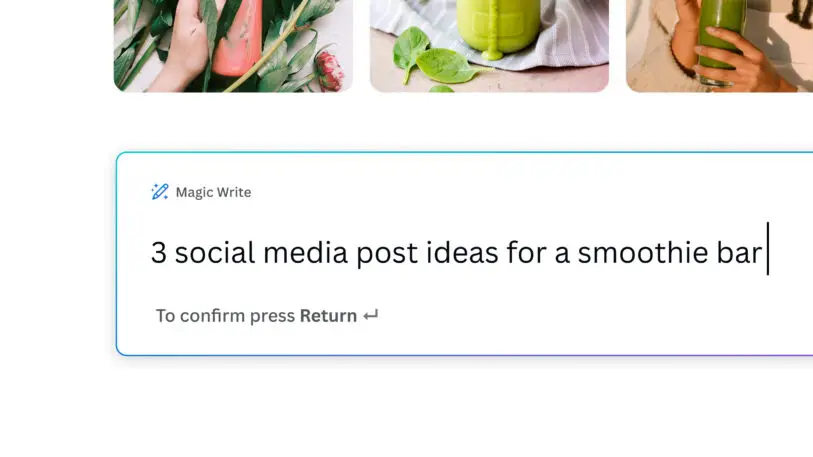
But it is Magic Write that actually defines Canva Docs. When you click on the plus icon that invites you to “add something” to the blank page, the very first item in the menu is the Magic Write prompt. If you have ever used GPT3 or the new ChatGPT text generation artificial intelligences, you know how this goes: You write what you want in a field, hit enter, and the computer will spit out a coherent text that follows your command.
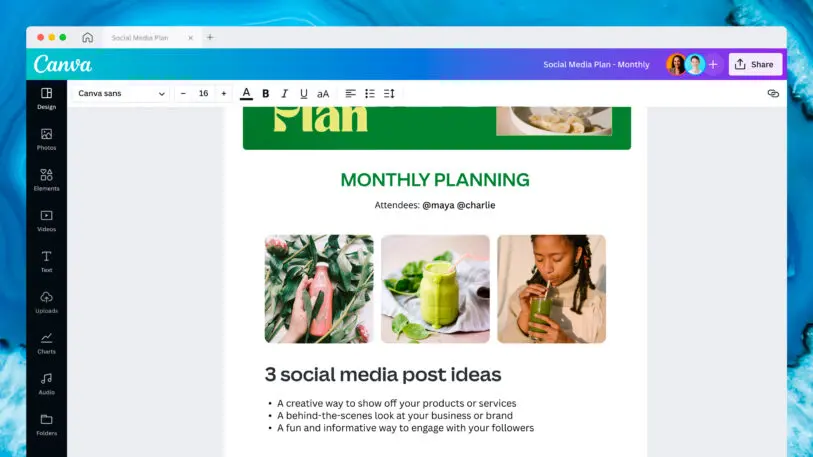
Magic Write is based on GPT3 and it’s the product of a partnership between Canva and OpenAI. “One of the reasons that we were keen to partner with them is their fantastic technology and the models that drive machine learning,” Adams says. But Adams believes the applications for real-world users are lacking. Canva Docs has the ability to bring this powerful new technology to a huge audience (110 million monthly active users), many of whom will experience it for the first time via their app.
Adding GPT3 to Canva Docs, Adams claims, “is the culmination of figuring out what do users need. How are they going to interact with it inside our app? What sort of use cases are they gonna use it for?”
Breaking writer’s block
That’s where Canva Docs radically departs from GPT3 or the latest ChatGPT that has taken the world by storm in the last few days. The prompt you write in Canva will not produce a full school paper on climate change or pen a recipe book or write a script for a TV pilot. Instead, Magic Write is designed to break writer’s block the same way the graphical templates in the rest of Canva’s design suite break “designer’s block.” Adams claims that they know that looking at a blank page instills fear in even the most professional of writers. “It can be the point where a lot of people just throw up their hands and walk away,” he tells me.
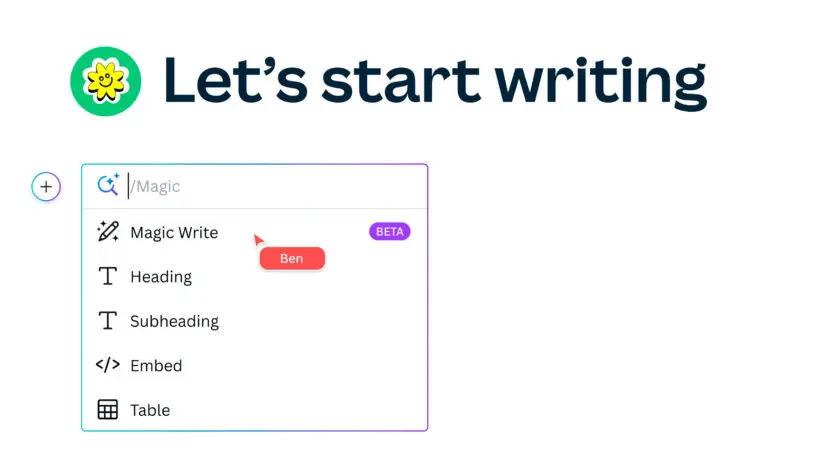
That’s where Magic Write’s AI comes in. Adams points out that it’s designed to give people the confidence to start adding their own ideas and putting their own context into what they’re creating. “That’s probably the most important point for us. And that’s why we’ve gone with a model that we’ve tuned for that particular length and for those particular types of topics.”
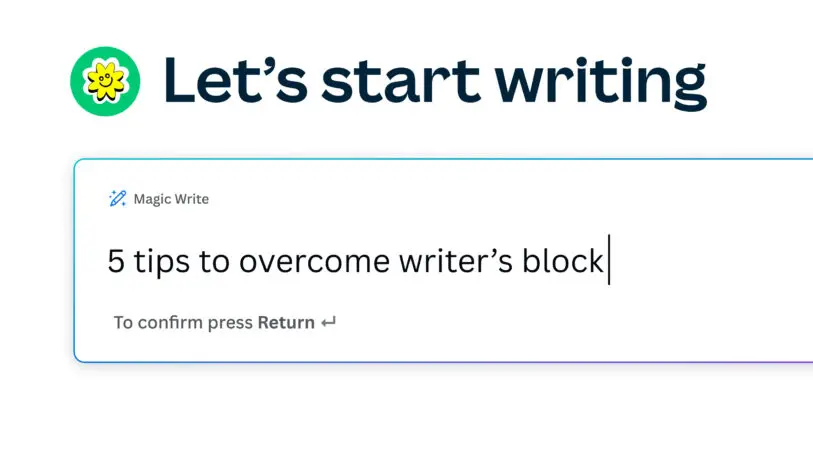
Adams is referring to the 1,500 character limit in Magic Write’s results. It’s designed to give you short, quick prompts like “the best 5 most delicious pancakes ever” or “5 facts about climate change.” The AI is also tailored to practical stuff, like “write me an employment cover letter to apply to be a NASA astronaut.”
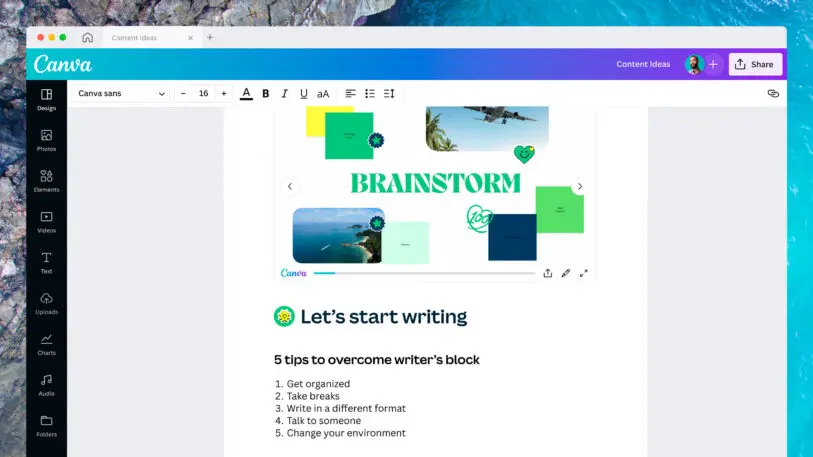
Look mom, no interface!
If you’ve already experimented with ChatGPT, you know it has the ability to create fairly complex stuff out of thin air. In this context, Magic Write approach could feel limiting or even rudimentary. And, while I understand Adams’ logic to use AI as a creative helper rather than creator, I’m not convinced that limiting the output to short answers is the best approach. Why truncate answers instead of giving the user the capacity to ask whatever they want, with as much depth as they want?
The answer to that is perhaps GPT3 itself, which it is not as good as a ChatGPT or as GPT4 is rumored to be. Maybe at this point it makes more sense to keep things tight and use Magic Write as a creative assistant.
It’s not hard to imagine a not-so-distant future (as in, next year) in which AI does a lot more for us, perhaps to the point where writers and designers, who traditionally create things from scratch, become editors and curators who cherry-pick and guide a group of AIs to create something that fits their vision.
“What you see as a design tool now will not be the same in five years,” Adams begrudgingly admits when I push him on this idea. “I can definitely see an AI-assisted creation process becoming much more fluid.” Perhaps it’s a process in which the AI gives you a creative path, where you choose a direction, and the AI keeps iterating until it hits the sweet spot you envision. Or maybe it’s something more hands on, as he proposes, in which you get the output and you edit it yourself, then give it back to the AI. “I can definitely see [the creation process] becoming much more fluid and much more proactively responsive to you,” he tells me.
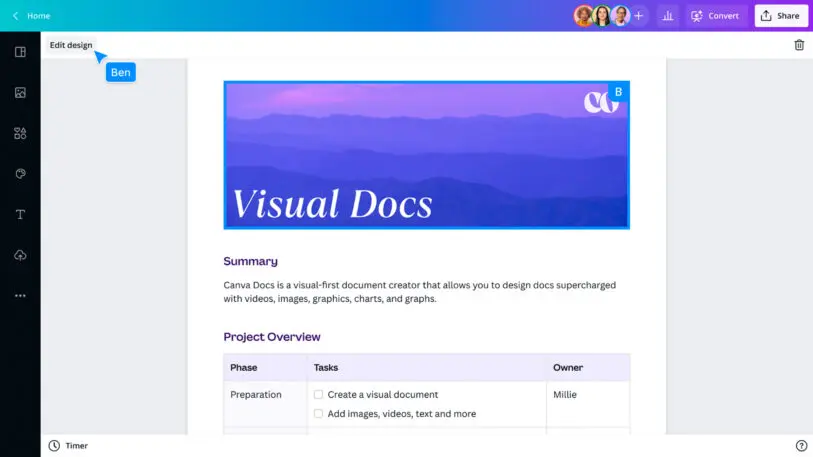
Adams doesn’t want Canva Docs to go down the path of Clippy, but he sees a future where the “AI works more faithfully with you as a collaborator, rather than something you have to manually call up every time you want to see to it.” It’s a good comparison, even if Canva may hate it. Clippy failed because it was dumb and annoying. AI, however, is moving toward a reality where it becomes a sentient being capable of collaborating with you as a creative professional might.
“I think that’s probably the most exciting area for us because then it really becomes a partnership between you suggesting things, creating things, taking input from the AI that just bubbles up ideas to you, making it almost like you’re talking to someone else on the other side,” he says. I personally think it will be much more than that. I can see AIs becoming your very own creative agency or film crew or animation studio, with us humans sitting in the director chair, guiding it to bring our ideas into form.
For Canva, the latter will be like coming full circle: The company started with the objective of enabling everyone to become designers—“skeptics be damned”—using templates and a very simple user interface. I believe that the ultimate goal should be to completely eliminate the user interface itself. In the end, no matter how streamlined it is, having to deal with knobs, keyboards, cursors, and palettes is always an obstacle between your idea and the final product. I think Canva may have inadvertently started the journey toward that reality.
Recognize your brand’s excellence by applying to this year’s Brands That Matter Awards before the early-rate deadline, May 3.